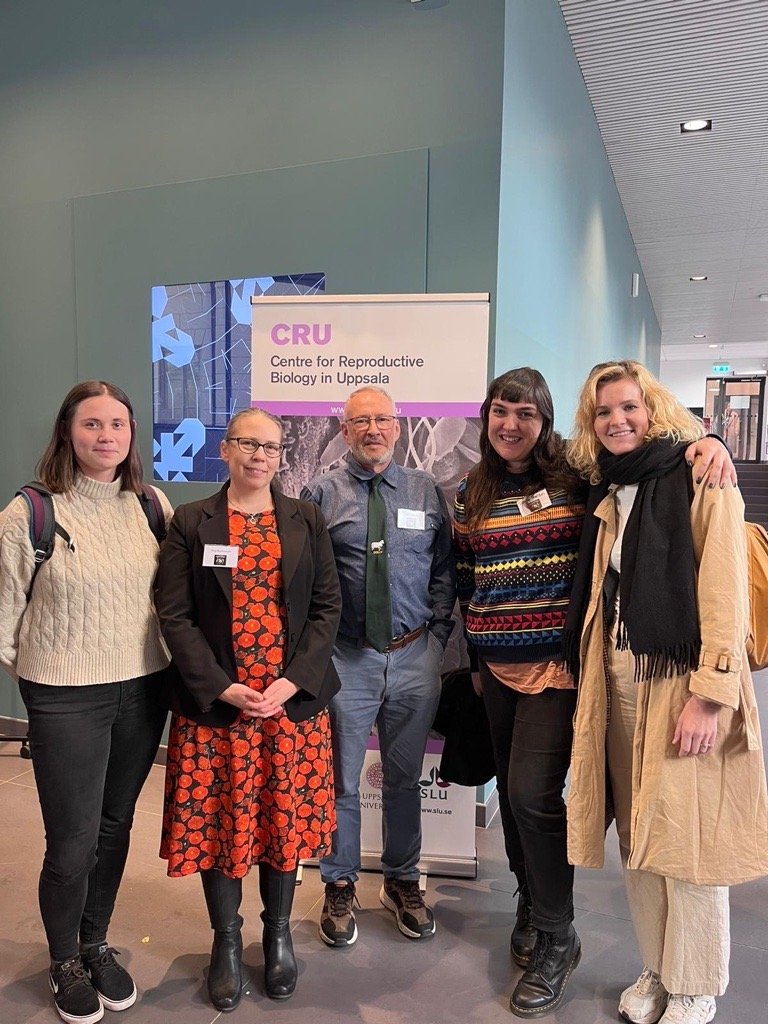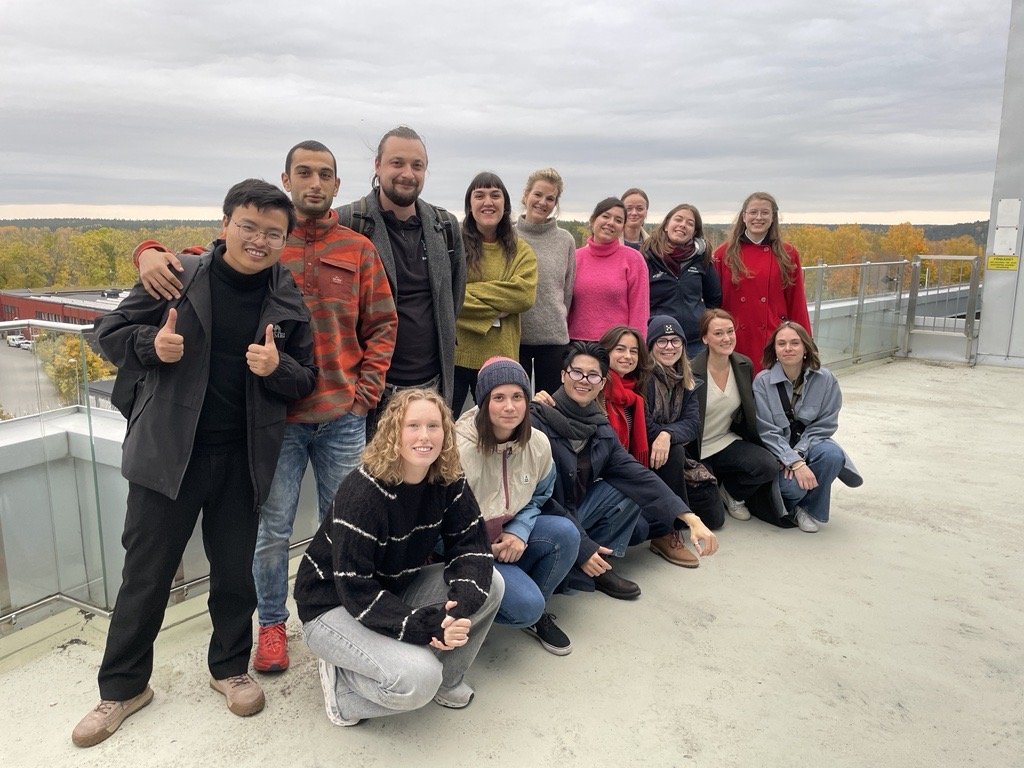CRU Course Blog - Paulina Pyrek and Sheyda Shapouri
14-18.10.24 | Swedish University of Agricultural Sciences and Norwegian University of Life Sciences (NMBU)In mid-October (14-18.10.24), we had the opportunity to travel to Uppsala for the Center for Reproductive Biology’s (CRU’s) course in comparative reproductive biotechnologies at the Swedish University of Agricultural Sciences (SLU). This was a four-day course absolutely packed with information about reproductive technology and their use in both human and animal reproduction.
From left: Paulina Pyrek, Ylva Sjunnesson (SLU) – organizer of the course, Bill Ritchie (Roslin Embryology) - Dolly creator, Sheyda Shapouri, Ellen Nordstoga Haldorsen
The first days were filled mostly with lectures on topics including physiology of reproductive cycle, IVF and IVP in animals and humans, artificial insemination, endocrine manipulation and last, but not least: cryopreservation of reproductive cells, embryos, sperm and ovarian tissue. It was a great opportunity to not only meet experts in the field from SLU, Karolinska Institutet and local IVF clinics, but also get acquainted with our fellow course participants and their projects related to reproductive biology. After a long break, we also got to reunite with our colleague doing the PhD at Wageningen University and Research – Mahsa Abdi!
From left: Ellen Nordstoga Haldorsen, Mahsa Abdi, Paulina Pyrek and Sheyda Shapouri
On the fourth day of the course, we had the special opportunity to attend the Center for Reproductive Biology’s 25 year anniversary event, consisting of poster presentations, speakers from around the world, and a networking dinner. Here, we got to learn about cutting edge reproductive technologies and their uses in endangered animal conservation and human fertility treatments. Dr. Pierre Comizzoli from the Smithsonian Institution in Washington D.C. gave a fascinating lecture on assisted reproduction and regenerating endangered species populations. We also heard a talk from one of the scientists involved in the Dolly project, Dr. Bill Ritchie, and learned exactly how the cloning process was developed to achieve this groundbreaking feat.
Zebra fish embryo around 25h after fertilization
This course was a fascinating look into the scope of what reproductive biotechnologies, including cryopreservation techniques, can do for both humans and animals. For those of us with a background more focused on animal biology, conservation, or veterinary science, the human element was a completely new perspective we don’t often get to think about. Examples such as preserving fertility after childhood cancer treatment (using cryopreservation!) or mainstreaming IVF procedures so that they’re accessible to people experiencing fertility issues really put this whole other world of reproductive technology into focus for us.
Before arriving in Uppsala for this course, we were tasked with making a short presentation quickly outlining our academic background and current PhD work, as well as how this work is relevant to the discipline of reproductive biotechnology. Throughout each day of the course, we got to hear everyone’s presentations and discuss their work amongst ourselves and the course coordinators.
We are very happy we had the opportunity to attend this course and want to once again thank the organizers for equipping us with valuable theoretical and practical knowledge on the topic of assisted reproductive technology!
All the participants of CRU’s course, 2024 edition.




